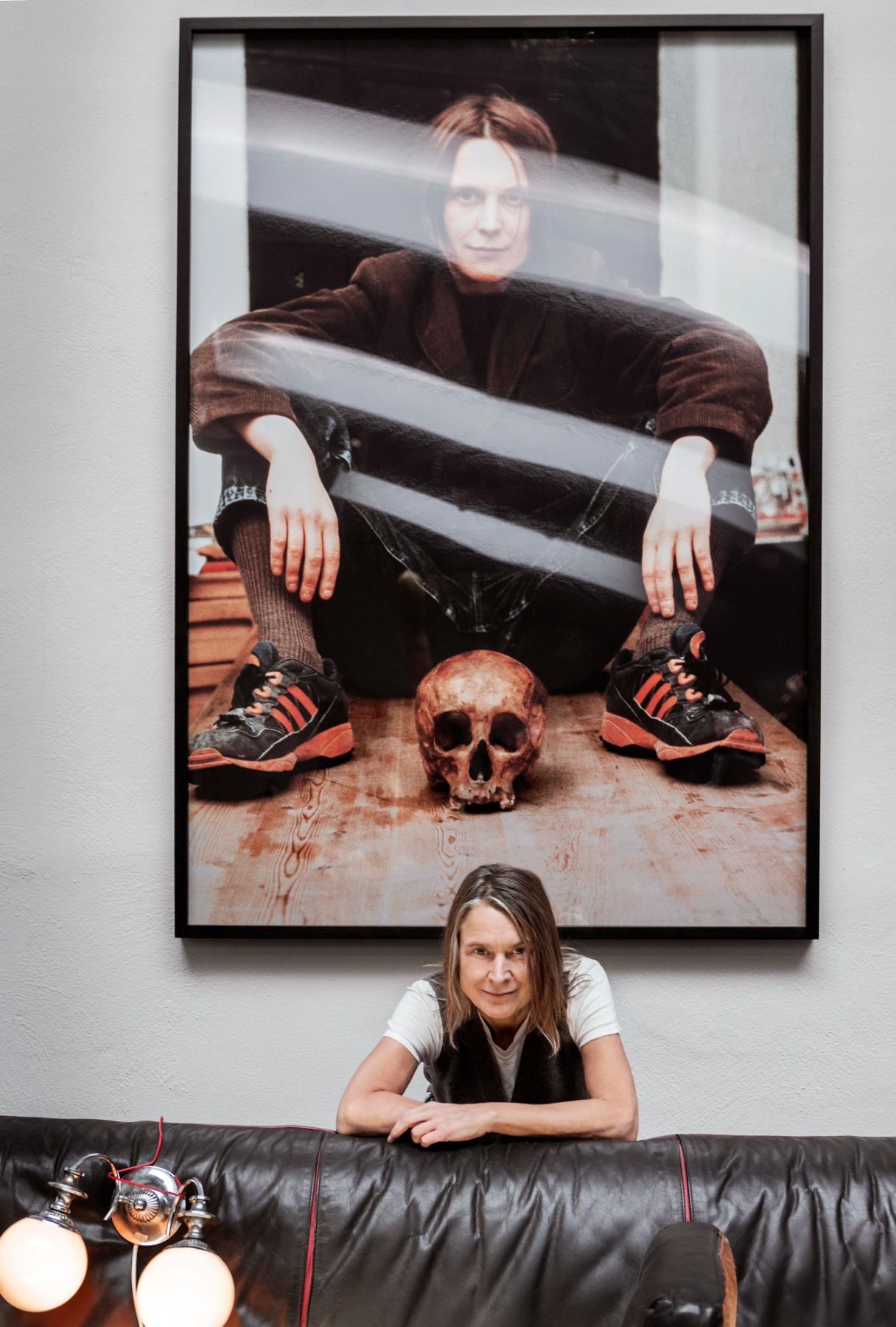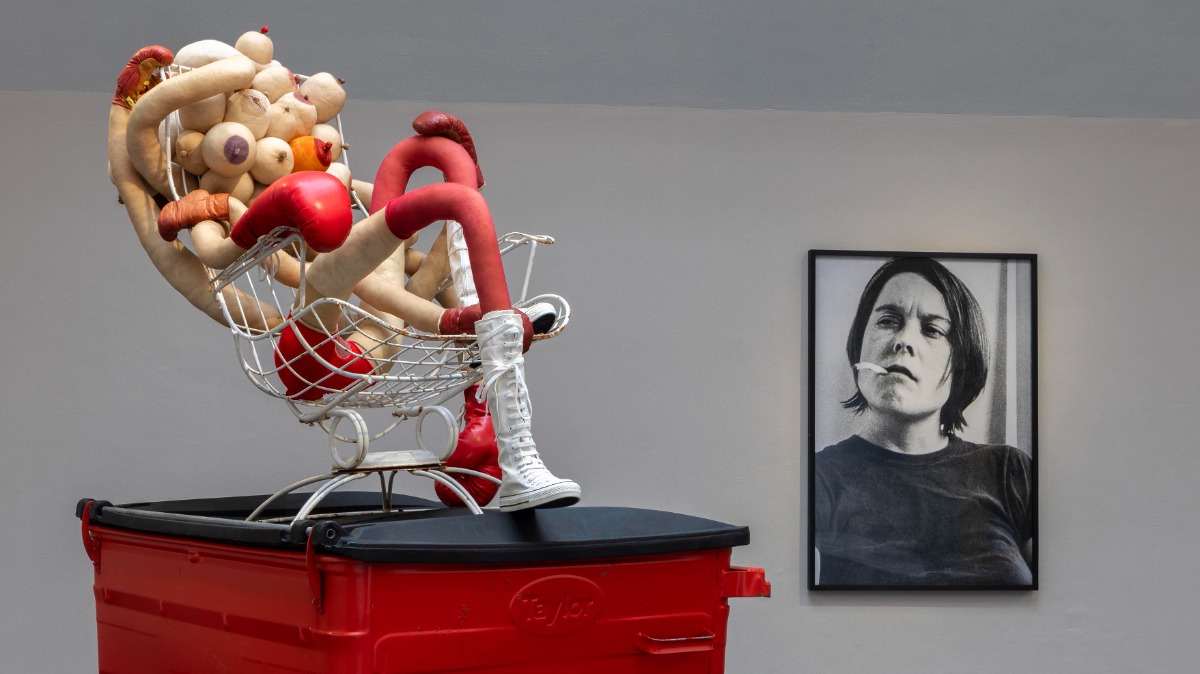
Sarah Lucas: “Meaning isn’t fixed”
An interview with the British artist Sarah Lucas, one of the most influential figures on the contemporary art scene. Her exhibition NAKED EYE has just opened at Kiasma (Helsinki)
The name of Sarah Lucas first resonated in the art world with the emergence of the YBA (Young British Artists) phenomenon. At the time, she had just graduated from Goldsmiths (1987), and by 1988 she was participating in the group exhibition FREEZE, organized by Damien Hirst, which became the first prominent artistic statement of this nascent art movement.
It was in the early 1990s that Lucas began incorporating furniture as a stand-in for the human body. This approach led to one of her iconic works, Au Naturel (1994), an assemblage of objects – including a mattress, a bucket, a pair of melons, oranges, and a cucumber – that evoke male and female body parts. Working with everyday “readymade” materials – furniture, food, cigarettes, and tights – Lucas transforms the ordinary into striking compositions that explore the human body with humor, desire, and vulnerability.
Installation view from the exhibition NAKED EYE. Photo: Finnish National Gallery / Petri Virtanen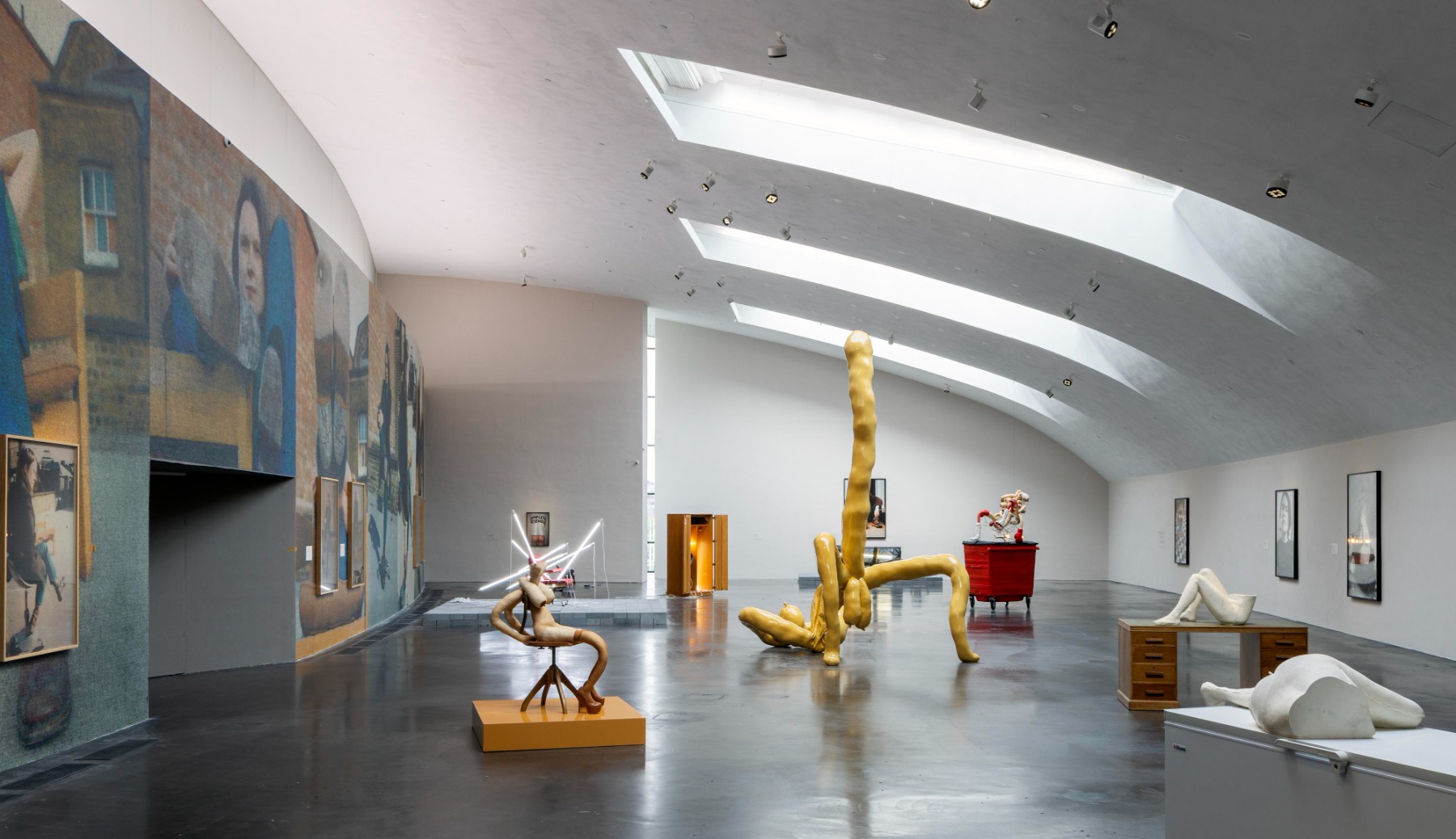
In 2015, Sarah Lucas represented the UK at the British Pavilion during the Venice Biennale and was the focus of a major retrospective, AU NATUREL, at The New Museum in New York in 2018. More recently, her survey exhibition HAPPY GAS was presented at Tate Britain in London (2023–24). Her exhibition NAKED EYE at the Museum of Contemporary Art Kiasma (Helsinki), which opened on October 10, offers an expansive retrospective of her four-decade career, presenting sculptures, photographs, and installations – both new works and pieces that have featured in major exhibitions worldwide. This marks Lucas’s first major solo show in the Nordic region.
With the participation of colleagues from Kiasma, we reached out to Sarah Lucas, who kindly agreed to answer our questions. This took place just a few days before the opening, while she was putting the finishing touches on the NAKED EYE exhibition.
Sarah Lucas. VOX POP DORIS. 2018. Photo: Finnish National Gallery / Petri Virtanen
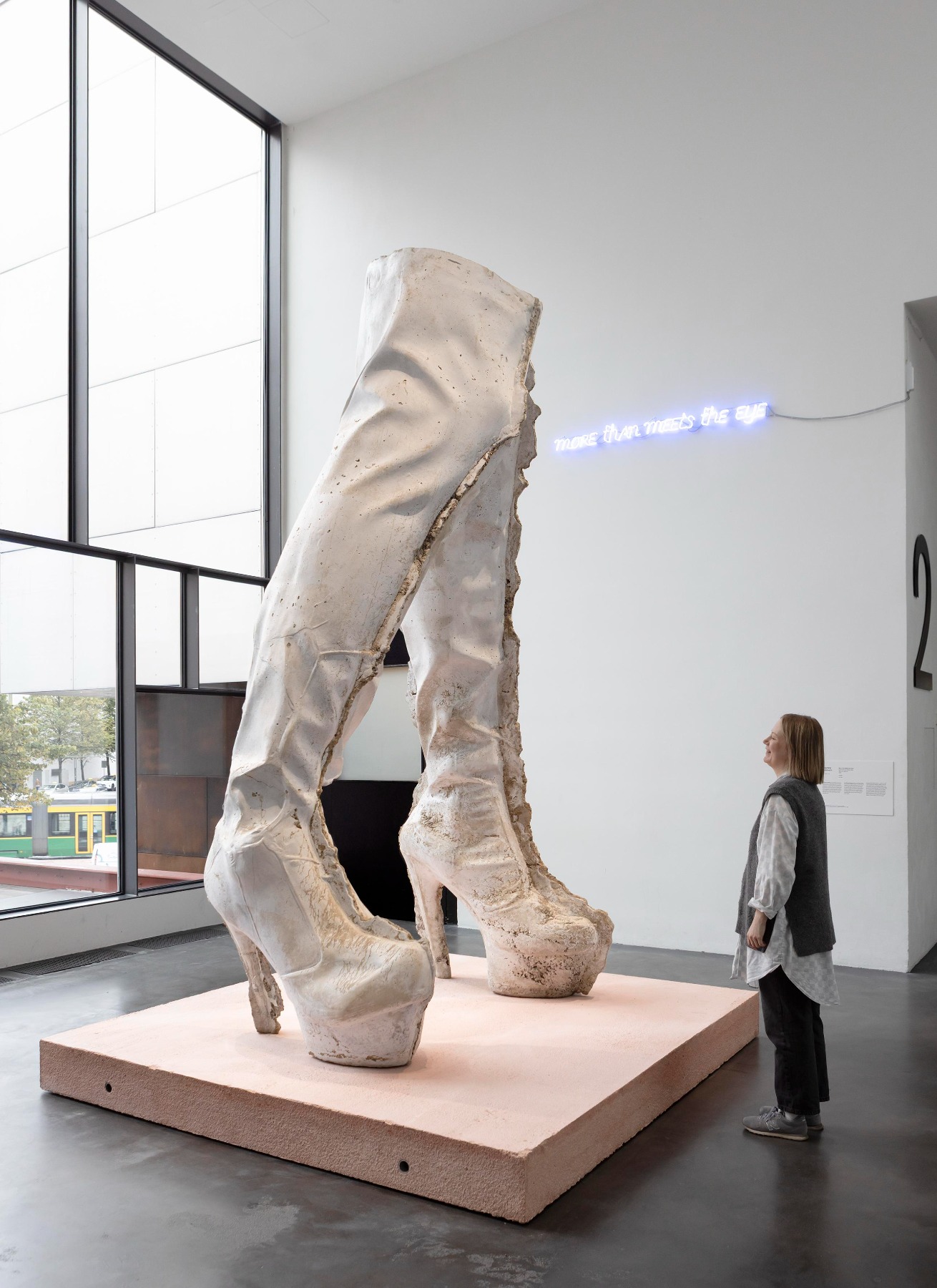
Much of your work plays with humour and everyday objects. How do you approach the balance between playfulness and deeper social or political commentary?
Lately, for some while, I’ve focused mainly on figures. I don’t expect them to say, ‘vote labour’ or ‘men ruin everything’. I’m looking for attitudes in their posture that express some feeling that I can relate to. That seems real to me. That strikes a recognisable chord. I would say it’s more of a feeling than something articulated in words. More of, 'I've felt like that' or, ‘my mum is just like that’, or 'life does that to women.' If it’s not a figure I still like to touch a chord. Provoke an emotional response – often humour. But humour has a lot of aspects and not all of them funny. I would include empathy in the category of humour. Also, humour is moods.
Sarah Lucas. HONEY BUNNY. 2025. Photo: Finnish National Gallery / Petri Virtanen
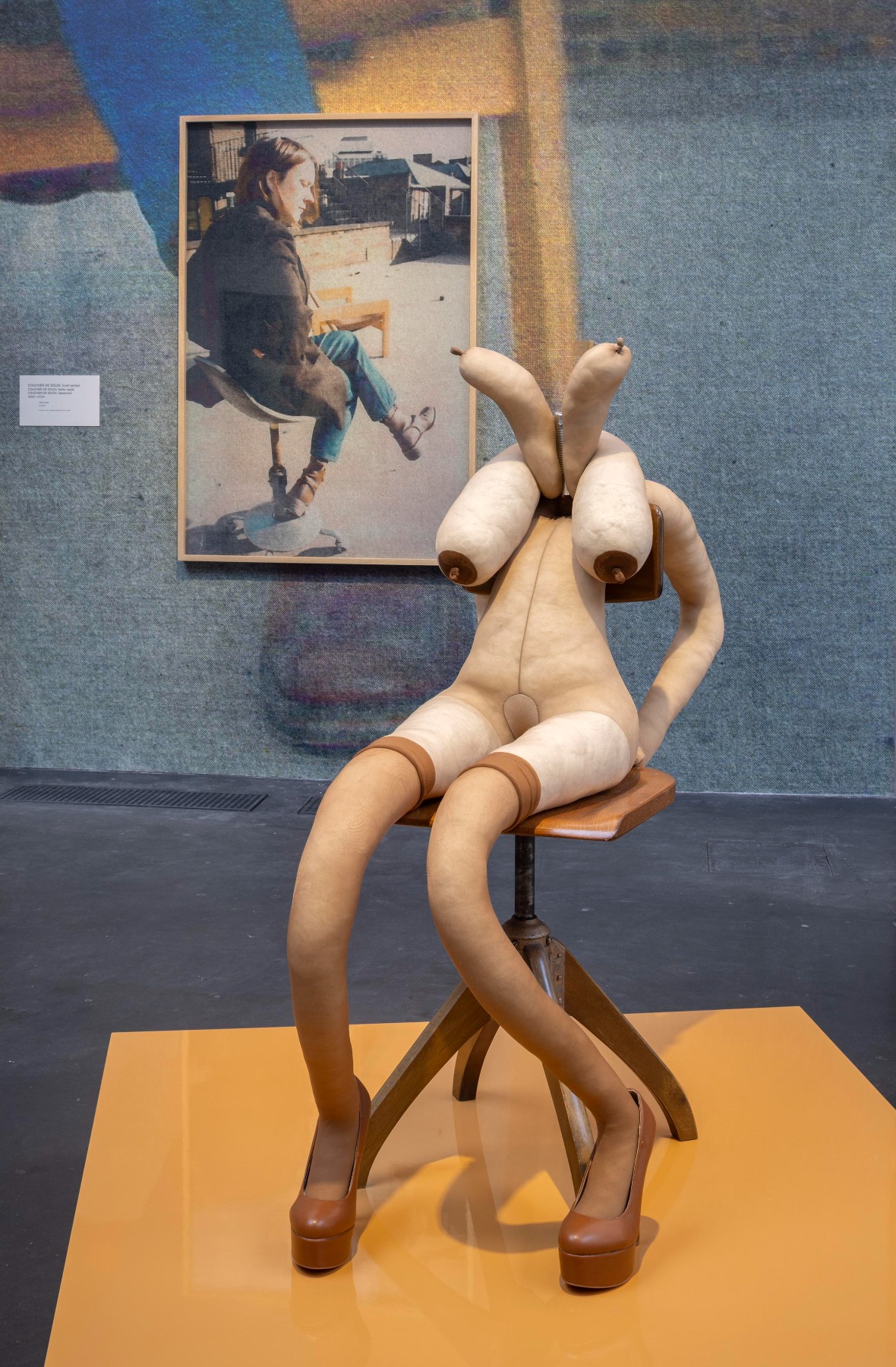
What role does materiality play in your practice? Do you choose materials for their cultural associations, their physical qualities, or a mix of both?
I choose materials for their reality. Material is reality. That includes qualities like texture, colour, pliability or absoluteness. By which I mean actuality. Undeniableness. It also includes their connotations – the way they’re generally used, where we usually see them, their cheapness or expensiveness. All these sorts of meanings and values.
For me tights and concrete and newspaper images are particularly vivid. They locate us somewhere. Wearing – where-ing? Wearing lipstick for example. It means something. Most of us don’t think about what we’re saying in those terms. They don’t give it thought every time they do it. We’re saying a lot that we might not be conscious of at any given time. Body language. The same thing is happening in art, in making art and also viewing art. Construing something in the world and in our minds. It’s good when unconscious things come through. It’s a revelation.
Sarah Lucas. Self-Portrait with Fried Eggs.1996 © Sarah Lucas. Courtesy Sadie Coles HQ, London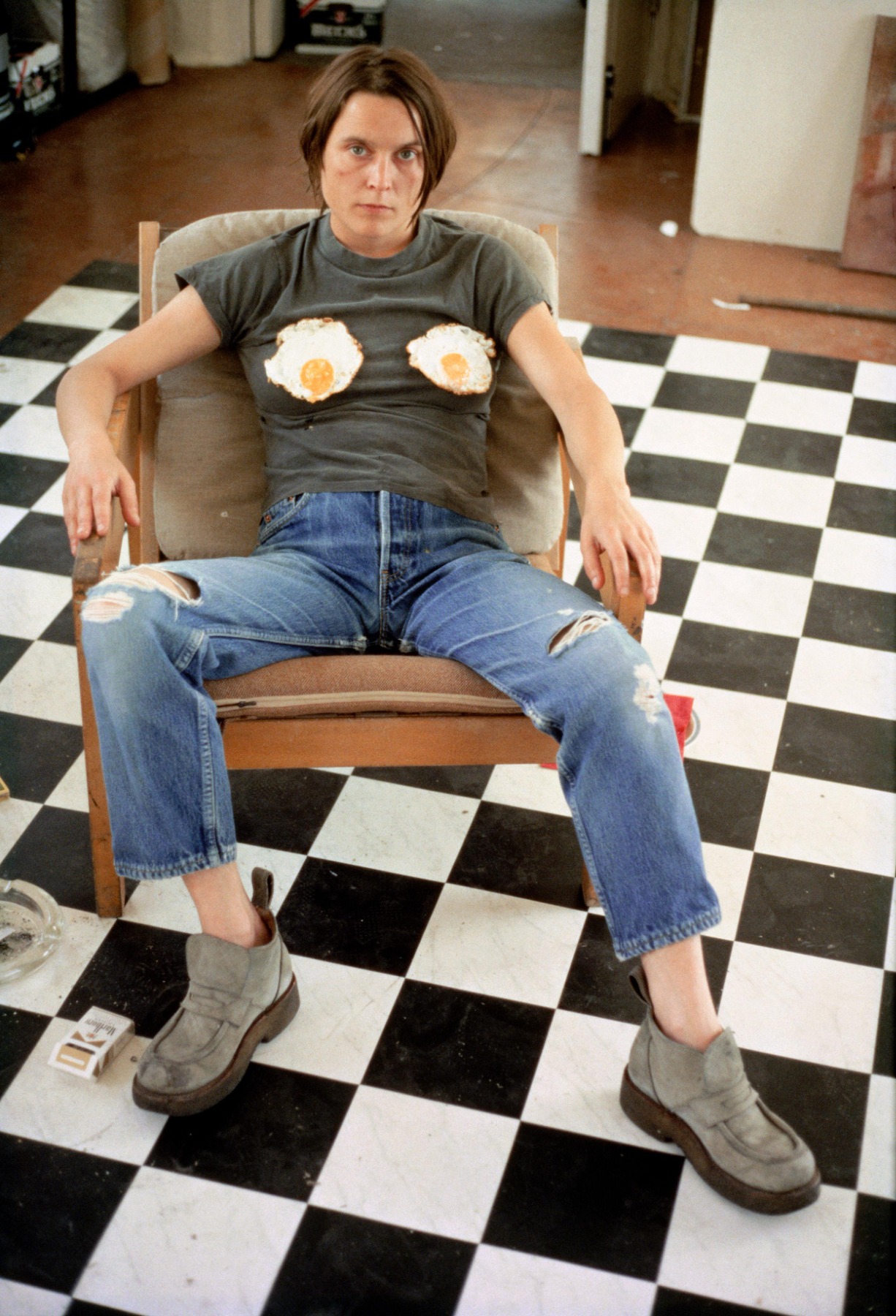
How has your understanding of the body – both male and female – shaped your art across the years?
Well we all have one, don’t we? I have this body. I’m in this body.
Understanding? I’m a bit less sure about that. It seems a bizarre thing if you think about it too much. Why this body? Why function like this? Why does a down turned mouth mean unhappiness or disapproval? Many of questions to play with. A lot of the time, most of the time, we take for granted that we know what other people mean – in what they say and how they act. And that is necessary and to some extent at least we do understand. Otherwise, communication and language wouldn’t be possible. But it’s a tacit understanding. It’s not perfect or guaranteed. I’m fascinated by the meaning and implications of gestures. Some gestures are peculiar to men and some to women, but we can wear each other's and that can be funny or threatening or just shift the meaning.
Sarah Lucas. Au Naturel. 1994 © Sarah Lucas. Courtesy Sadie Coles HQ, London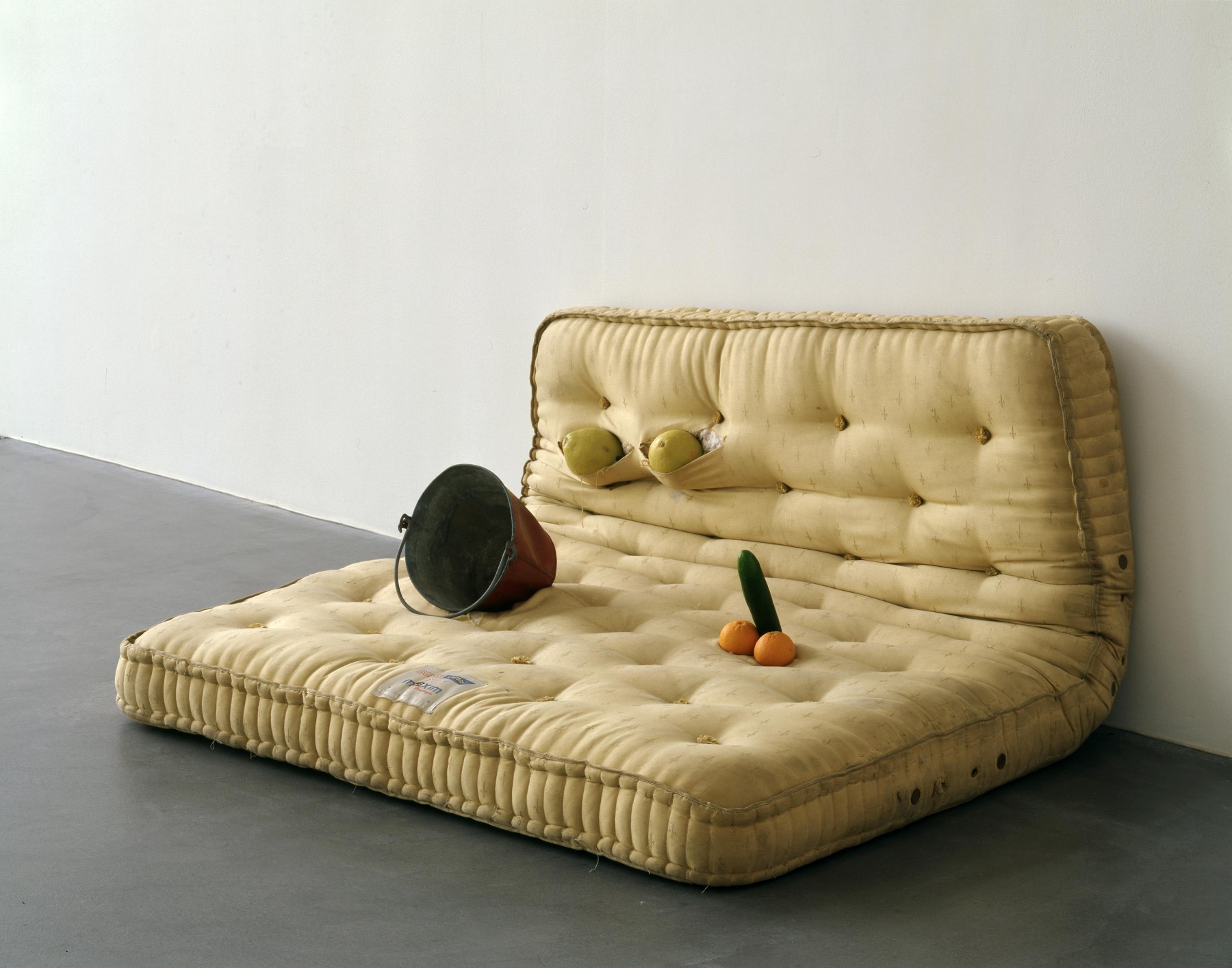
Your pieces often question conventions of gender, sexuality, and identity. How do you see these conversations shifting in today’s cultural climate?
They appear to be doing a lot of shifting. Or do they? There are a lot of acronyms about. I’ve never had an aptitude for acronyms. Acronyms around sexuality seem to be doing alot of work lately. Whether sexuality itself has shifted? It always seemed pretty diverse tome in the present and historically. As a bystander (I say that because I’m 63 and settled in my relationship of twenty years with my partner. So I’m not, like many young people and some older ones, looking aroundfor an identity that might fit me) I would observe that it seems that the terminology and thefluidity are implied by it having liberated something – for the younger generation in particular.
Conversely it also seems to have made them very depressed. Then again there’s plenty to be depressed about. What scares me about the cultural climate right now is the polarisation of beliefs. All sorts. The intolerance of one and others’ beliefs and the volatility of these times. The frightening shift to the far right. The opposition to and dismantling of institutions of the state including culture but also education and law. These institutions were centuries in the making. These are iconoclastic times. War all around and the prospect of dictatorships in what we used to call the free world. Diversity looks to be on shaky ground right now.
Installation view from the exhibition NAKED EYE. In the front: ZEN LOVESONG (2022). Photo: Finnish National Gallery / Petri Virtanen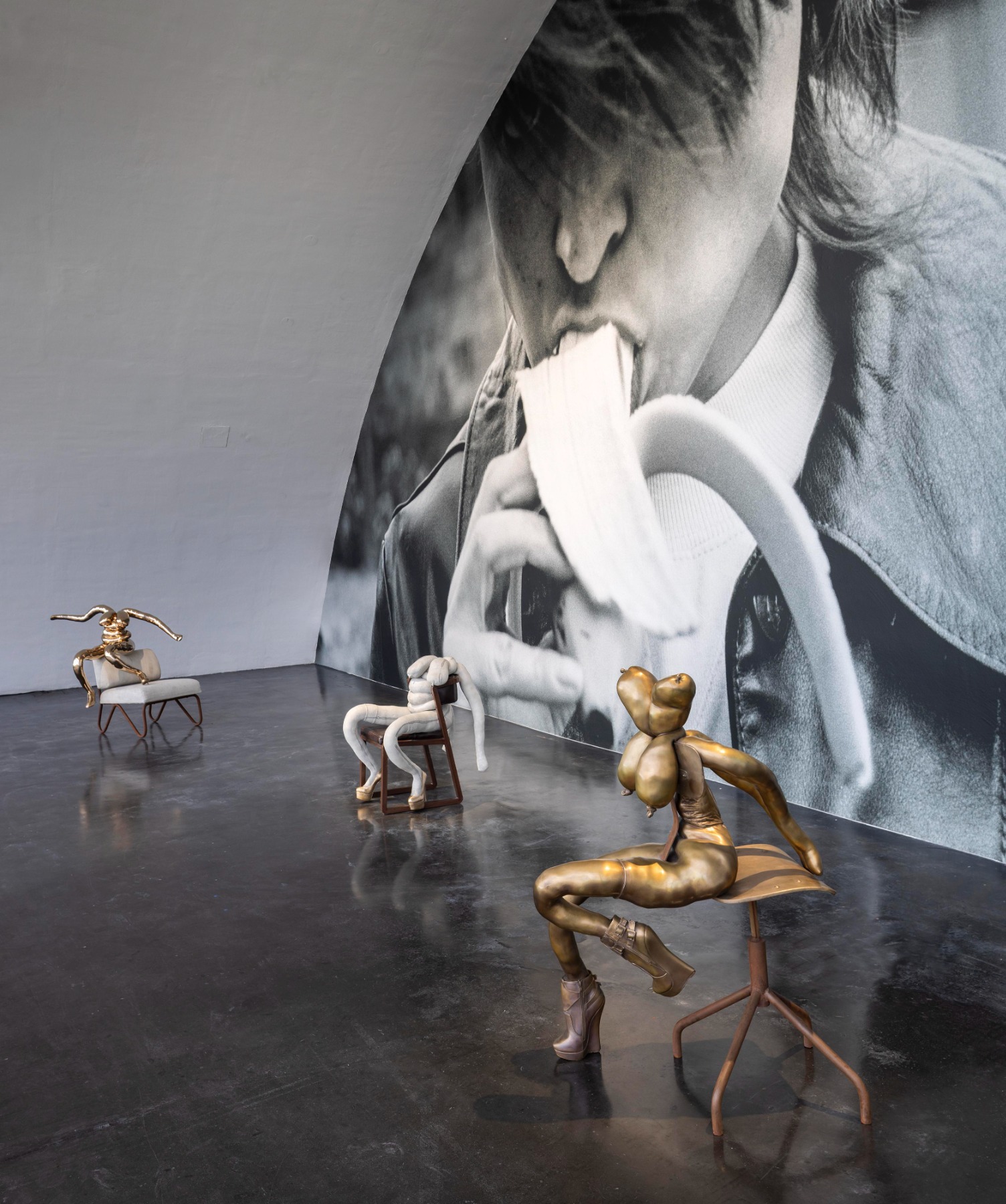
Your practice is rooted in sculpture, yet you often present your works in dialogue with photography. How do you see these mediums interacting, and what does this combination allow you to express?
Initially, way back in 1989 or 90, flippantly I asked my then partner, Gary Hume, to take a picture of me eating a banana. By flippant I suppose I mean unpremeditated. We shared a studio at the time and I peeled a banana with a view to eating it and the idea popped up. I’m not really someone who likes to be photographed. Nor was I a recognised artist so there was no reason to suppose that anyone else would be interested in my doings. Soon after this when I had the opportunity to be in a group show I chose the banana picture that seemed strongest to me – it wasn’t about flattering myself. At least I certainly didn’t think so at the time. It was more about attitude and androgyny and something in those things captured my interest. That seemed to contain a challenge. To myself and to the viewer. Via that group show, and a couple of others that came along on its heels, people began to take an interest in my work.
Surreptitiously the banana photo had situated me as an identifiable entity in my practice. What that amounts to, I think, is that people can imagine me, in person, behind the things I make. Which informs their imagining of what the things might mean somehow. It enables them to make a guess at what might be in my mind. To put themselves in my shoes and have a look around from there. Of course, that may not be anything like my actual shoes. It might be more like their own self-consciousness. I think it is a self-conscious business looking at art. And by the same token it’s a self-conscious business making art.
Sarah Lucas. Human Toilet Revisited, 1998; Margot, 2015. Photo: Finnish National Gallery / Petri Virtanen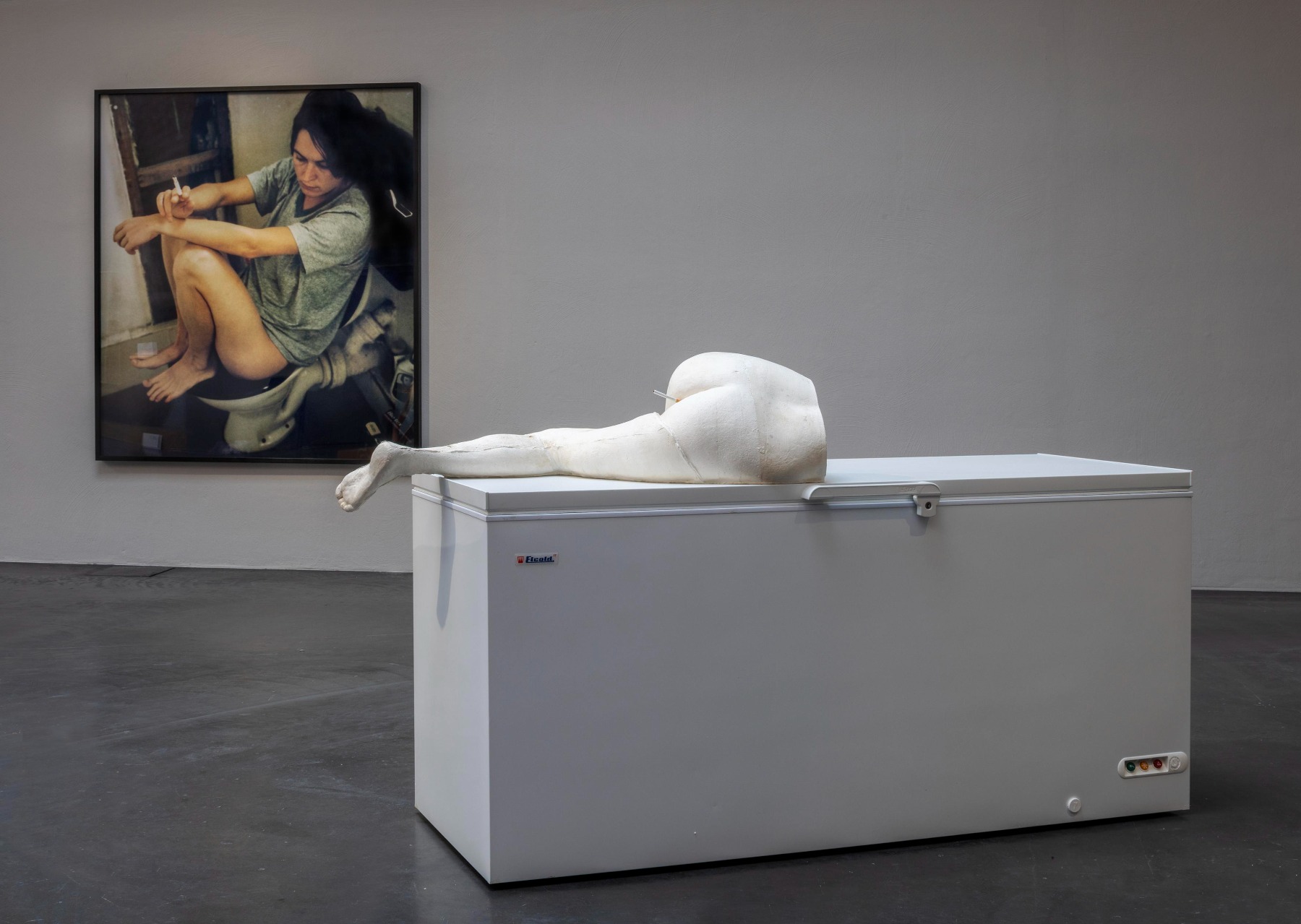
You emerged as part of the Young British Artists movement in the 1990s. How has your relationship with that label evolved over time?
I like it. I hate it. It’s bullshit. It wasn’t my idea. It’s uncomfortable and ill-fitting. It’s funny. It makes sense to the general public. It’s a brand. Yes we are a peer group. Yes we do know each other and have been at a lot of the same parties over the years. No we’re not all that much alike as people or in what we make. Our stories and backgrounds differ… I don’t have a problem with it. Not anymore.
Installation view from the exhibition NAKED EYE. Photo: Finnish National Gallery / Petri Virtanen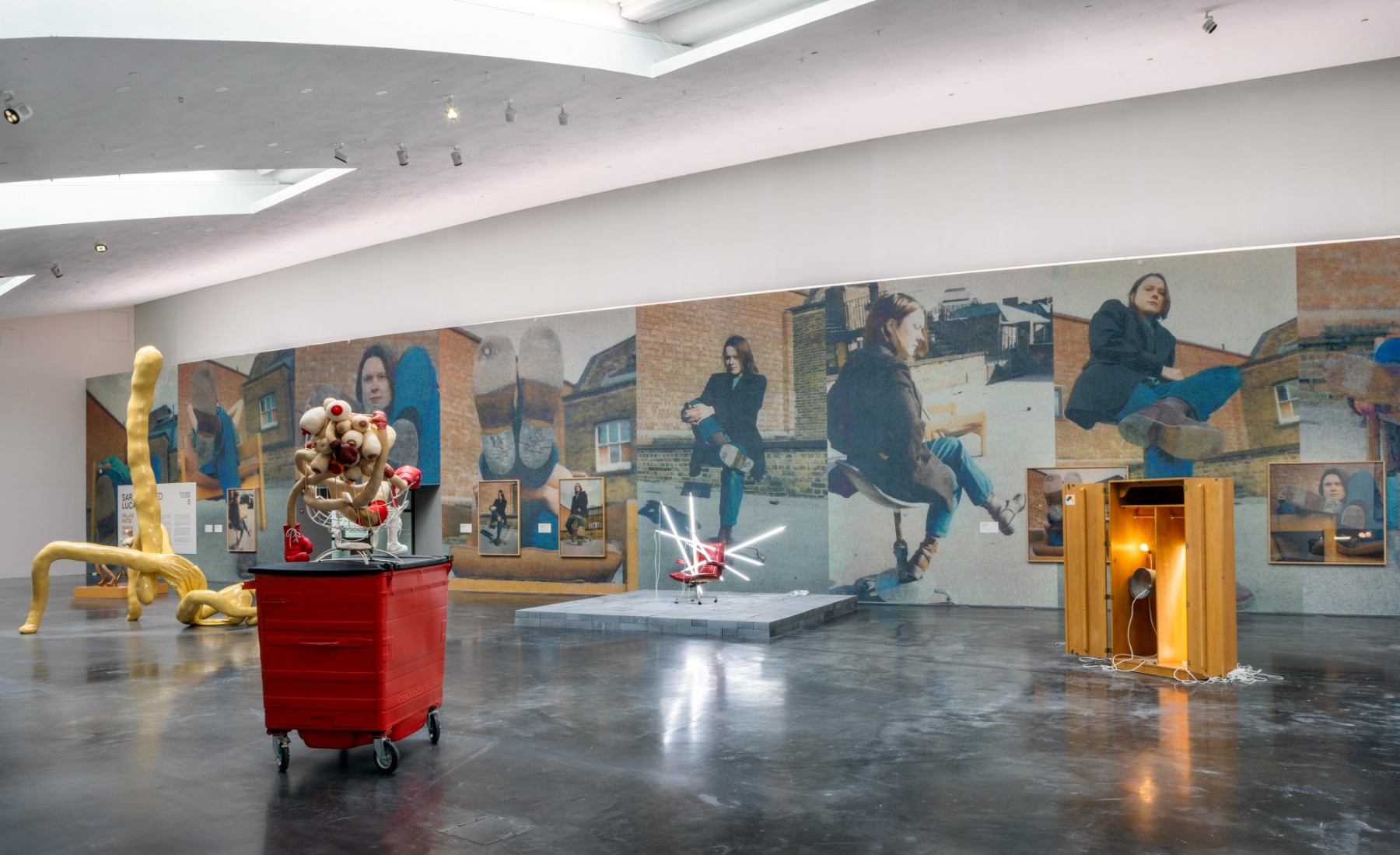
The upcoming exhibition at Kiasma spans four decades of your work. How did you approach selecting which pieces to include, and what narrative do you hope emerges from this overview?
I don’t control the narrative. There isn’t one.
I just finished installing the show. During the last few days, in the process of that, it occurred to me a few times that it begins to look a bit like a narrative. Shifting things around. Holding the chin and scratching the head and thinking, hmm, what if I move that over there and this one goes with that, etc.
As the way it all hangs together becomes more convincing it seems to become more meaningful. I’m tempted, for fun, to say, what it means is anybody’s guess. True in a way because meaning isn’t fixed. Certainly not by me. It’s a situation in which to bounce ideas around. To wonder. And things take on different meanings from the circumstances around them at a given time. Each generation generates its own point of view. So feel free to construe and re-construe as you fancy. I do.
Sarah Lucas. Photo:: Finnish National Gallery / Petri Virtanen